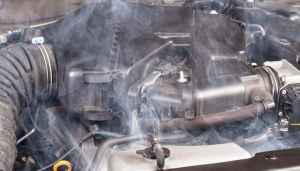Transmissions are a vital part of any vehicle, providing the connection between the engine and wheels that allows the vehicle to move forward or backward as desired. Without a properly functioning transmission, no car can move at all! Unfortunately, one common issue that can arise with transmissions is overheating, which can lead to permanent damage if not addressed quickly enough–so it’s important for car owners to know how they can prevent this problem from occurring in the first place. In this article, we’ll provide some tips on how to prevent transmission overheating and keep your vehicle running smoothly.
Transmission Overheating Prevention Tips
- Check Your Fluids: The most important step in preventing transmission overheating is to make sure that all of the fluid levels are correct.
Low fluid levels can lead to inadequate cooling and lubrication, which can cause your transmission to run hot and potentially break down over time. Check your owner’s manual for specific instructions on how much fluid should be present in the system, or take it into a reputable mechanic for assistance if needed.
-
Change Your Oil Regularly: Oil is what helps keep your engine and transmission cool by transporting heat away from these components; as such, it’s important to make sure that you’re changing your oil regularly according to the manufacturer’s recommended intervals (usually every 5-7 thousand miles). Not only will this help ensure proper cooling, but it will also help extend the life of both your engine and transmission!
-
Watch for Leaks and Additives: Leaks can cause low fluid levels, which can lead to transmission overheating, so be sure to keep an eye out for any signs of leaking fluid. Additionally, there are many additives available on the market that are designed to help reduce friction and improve overall cooling efficiency in transmissions; adding a small amount of one of these products can help to prevent overheating even further.
-
Keep an Eye on Temperature Gauges: Finally, it’s always a good idea to keep an eye on your vehicle’s temperature gauges (including the transmission temperature gauge if it has one) in order to ensure that everything is running as cool as possible. If you notice any signs of rising temperatures, take action quickly and address the issue before it turns into a more serious problem! Also learn about transmission shudder, the cause behind it, and how to combat it in your vehicle.
Conclusion
Transmissions can be very finicky components and require regular maintenance in order to keep them running properly; however, by following these tips you should be able to prevent your transmission from overheating and maintain its performance and longevity for years to come! If you’re still having issues after trying these tips, it’s always best to take your vehicle into a qualified mechanic for further diagnosis.
 Low fluid levels can lead to inadequate cooling and lubrication, which can cause your transmission to run hot and potentially break down over time. Check your owner’s manual for specific instructions on how much fluid should be present in the system, or take it into a reputable mechanic for assistance if needed.
Low fluid levels can lead to inadequate cooling and lubrication, which can cause your transmission to run hot and potentially break down over time. Check your owner’s manual for specific instructions on how much fluid should be present in the system, or take it into a reputable mechanic for assistance if needed.
Add Comment